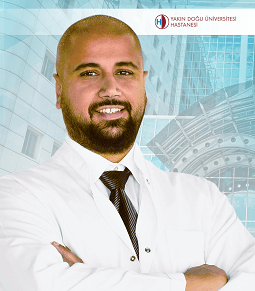
Varicose veins, also known as vein enlargement, can become a bigger problem as they progress. In addition to deteriorating the aesthetic appearance, it is possible to get rid of varicose veins, which cause serious problems such as swelling, pain or cramps in the legs, infection, bleeding and formation of ulcers (wounds) on the skin, without surgery. Near East University Hospital Cardiovascular Surgery Department Specialist Prof. Dr. Barçın Özcem says that they offer patients a comfortable recovery option with the Venaseal method, which is accepted as the most up-to-date and innovative varicose treatment in the world.
Venaseal method, also known as biological bonding
Venaseal, which is applied as the most up-to-date varicose treatment method in the world today, is performed with the use of a new product approved by the American Food and Drug Administration (FDA). The basic material of the product, which has biological adhesive properties, is currently used as tissue adhesive in some surgeries of cardiovascular surgery. The venaseal method is applied by injecting biological adhesive into the varicose vein and closing the vein by gluing.
Prof. Dr. Barçın Özcem: “We are now benefiting from non-surgical innovative methods in the treatment of varicose veins.”
“Although surgical treatment methods with surgery come to mind first when it comes to varicose treatment, non-surgical and robotic techniques used today have become new and increasingly popular treatment methods,” said Prof. Dr. Barçın Özcem and pointed out that innovative methods are used in the treatment of varicose disease at the Near East University Hospital, and that the surgical method is applied in very few patients who are forced to.
Prof. Dr. Barçın Özcem explained the method of application of the Venaseal method; “This method is a procedure that must be performed under ultrasound guidance, like laser and radiofrequency methods. Before the procedure, the patient must be examined in detail with Doppler ultrasound and the varicose veins must be mapped. The treatment of the varicose vein is provided by injecting adhesive through the catheter path placed inside the varicose vein.
Unlike other methods, the Venaseal method does not require any anesthesia. Very successful results are also obtained as an aesthetic varicose treatment method.
There are no bruises and pain associated with the procedure after the application. The process usually takes 10-15 minutes. Although rare, the Venaseal method can be used in combination with other methods.
Prof. Dr. Barçın Özcem says that the Venaseal method is a more comfortable procedure than other varicose veins treatments. Prof. Dr. Özcem said, “There is no need for anesthesia for the Venessal method as it is carried out through simple but effective surgical methods. Compared to laser and radiofrequency applications, which are other advanced technology methods, less pain and bruising are experienced, and faster recovery is achieved. Again, when compared to classical methods, there is usually no need for bandages and compression stockings after the procedure.”